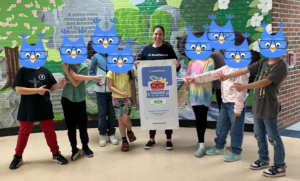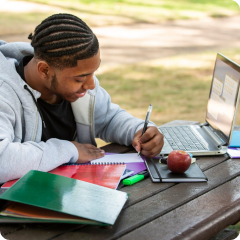How does ReadTheory impact student achievement? Explore firsthand experiences, efficacy, and stories from teachers around the world.

At Githens Middle School, many students were reading well below grade level, still working on phonics. With no common planning time and a wide range of needs, a consistent intervention plan seemed tough—until Lynn Mallory and her team found a way to unify their efforts and spark real growth.

Mitchell High School faced a significant hurdle, struggling to lift itself out of School Improvement Status as designated by the State of Colorado. Fall benchmark reading data painted a grim picture: the average student was reading at a 5th-grade level, a clear impediment to academic success.

During uncertain times, Lindsay Mairanz, an English teacher in Israel, turned to ReadTheory to keep her ELL students engaged and growing. The platform provided structure, motivation, and meaningful practice—even from a distance.

Hannah Gurmankin, a special education teacher in a 4th–6th grade resource room, needed an adaptive, engaging tool that could meet her students at their reading level, support IEP goals, and build the skills necessary for independent success—both in and out of the classroom.

Kevin Jordan teaches English as a Second Language (ESL) classes to adults, and many are starting out at a first or second-grade reading level. When he heard about ReadTheory, he knew it would best serve his students, and looked forward to expanding his own skill set in the process.

Adeeba Waseem, a 5th-grade teacher in the UAE, used ReadTheory to help 100% of her students improve their reading levels. By tailoring instruction to each learner’s needs, she created a supportive environment where students built confidence and made steady progress. Her student-centered approach empowered every child to grow at their own pace and develop stronger reading skills

In her new role teaching the Early Intervention Program for grades 3 and 5 in Monroe, GA, Jennifer West faced significant behavioral issues. Her students lacked accountability and awareness of their below-grade-level status.

With a wide range of abilities in her third-grade classroom, Anne Stehly was finding it hard to reach all of the students. Since third grade is the first year that students take the state standardized tests, she needed to focus on test-taking skills and question types that aligned with the test.

Kristina Hiatt, a high school English in an early college program, needed an adaptive, user-friendly program to provide differentiated reading materials for students at various levels and help them succeed on standardized assessments.

When William Barnwell began teaching Special Education English, his students had IEPs requiring weekly progress tracking. He needed insights into their fluency, comprehension, Lexile, and Grade levels to provide appropriate texts.

Kelly Stehlik knew that her special education students needed help with more than just the “look and find” reading comprehension questions. She noticed that they needed practice with higher-order questions–inferences, the main idea, making predictions, and more.

Caitlyn Herron was looking for a powerful reading comprehension tool that would consistently meet the needs of all students in her classroom. She also wanted a way to focus on the students’ positive work.

Carrie Kirkland knew that it was more important to meet her students’ needs than to just move them on to the next level. She needed a way to teach her high school students the basic reading comprehension skills they needed.
Teaching English as a second language, Michael Doherty needed a way to reach students who were at varying levels of comprehension, to increase engagement, and to raise student self-esteem.
